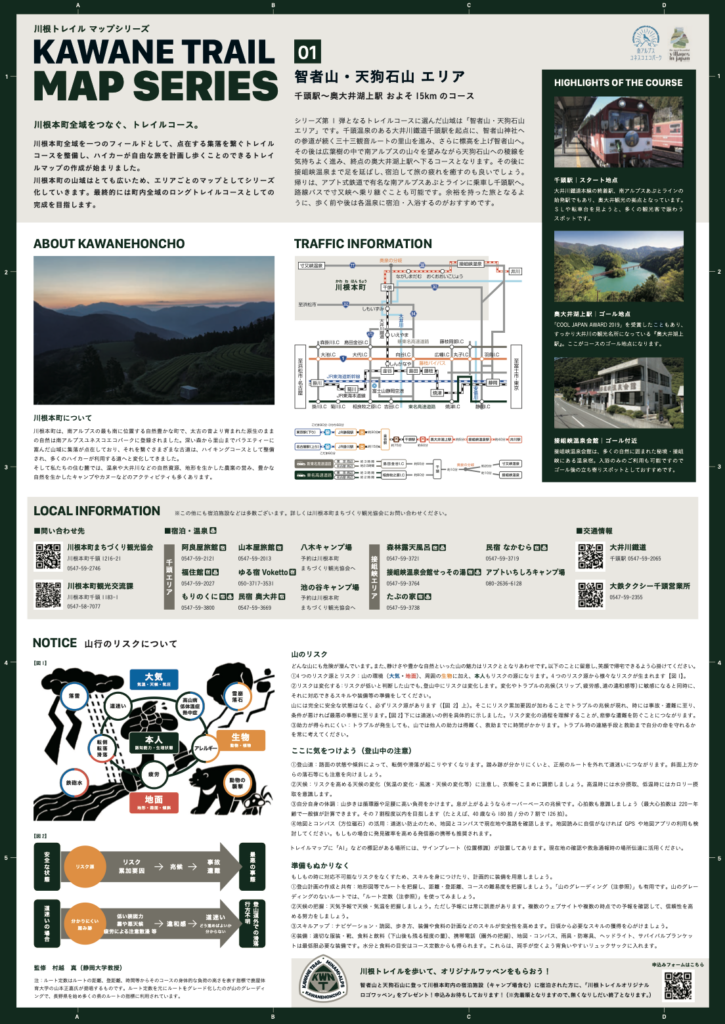A long trail where daily lifestyles once thrived
Kawane Honcho is located in the central part of Shizuoka Prefecture, at the foot of the Southern Alps, with the Oigawa River flowing from north to south. During the Edo period, ferry crossings of the Oi River were prohibited, so mountain passes and pathways for daily life were established to convey goods through the vast mountain areas and along both banks of the river. The Kawane Trail is laid out on the basis of these old lifestyle paths. The idea is to develop the Kawane Kaido along the Igawa River, the Kawane Higashi Kaido that used to lead to Sunpu Castle (in Shizuoka City), and the narrow roads that connect these routes to various villages, into long trails that hikers can walk along.
Our course this time is the “Chishayama/Tenguishiyama Course,” which opened as the first leg of the Kawane Trail. From Senzu Station on the famous “Southern Alps Aputo Line,” we ascend the approach to Chishayama Shrine and then gain more altitude to Chishayama (1,291m). The course then follows a forgiving ridge leading to Mt. Tenguishiyama before descending to Okuōikojō Station, a distance of about 15 km.
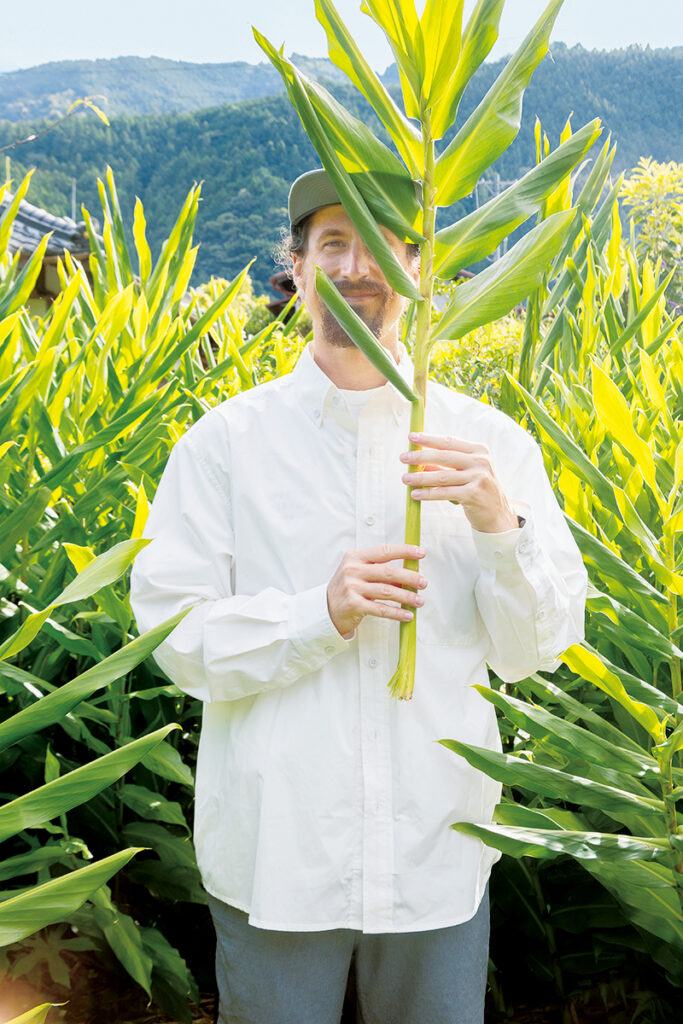
We are joined by Corey Turpin, a translator/artist who lives in Shizuoka City, as well as some local trail runners. After stashing some yokan made with local tea in our backpacks from Sugimoto-ya in front of the station, we set off for the course.
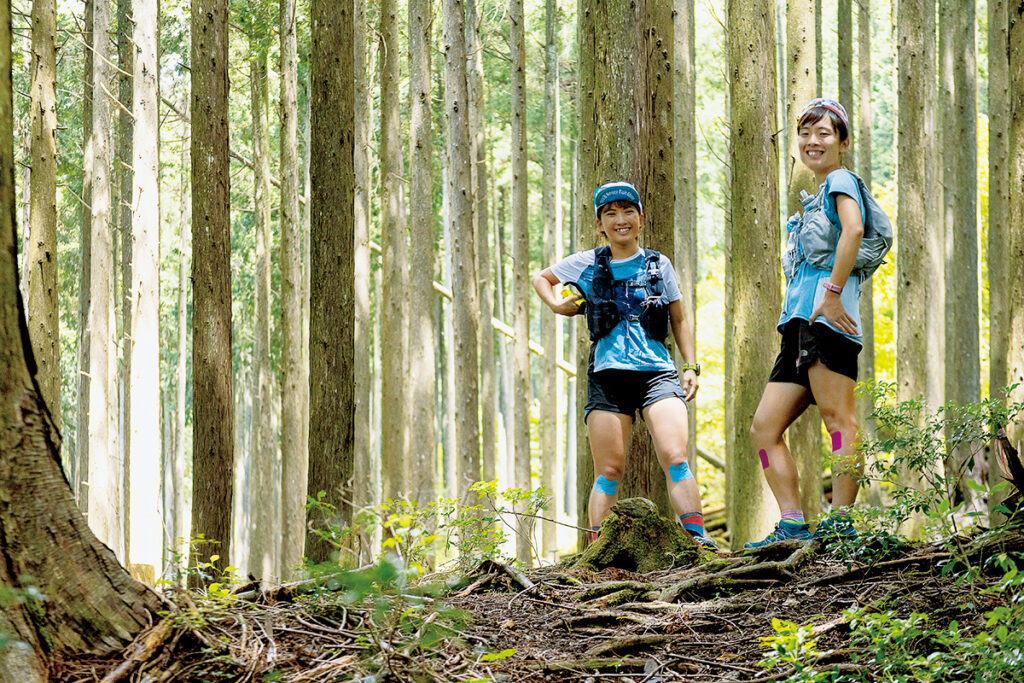
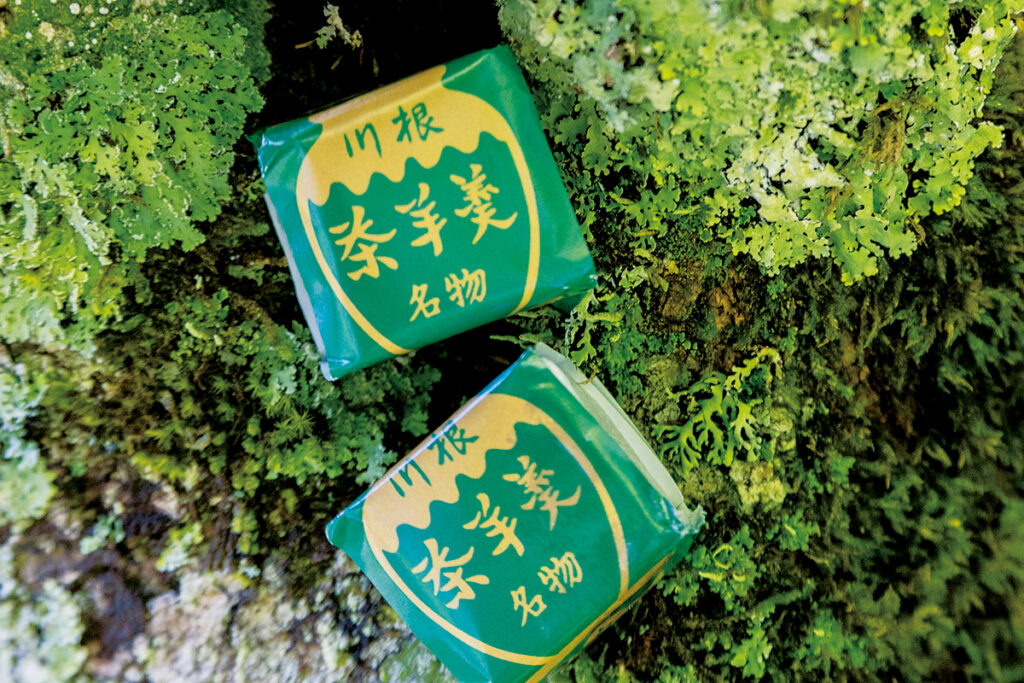
The tarmac road to Chishayama Shrine is known as the “Route of the 33 Kannon Statues,” with 33 statues of the Goddess of Mercy donated by local believers and enshrined along a 7-kilometer stretch. After paying homage to the Chishayama Shrine, which was once used as a deity for praying for rain and breastfeeding, and in recent years has been the site of many prayers for traffic safety and success in entrance exams, we proceeded to the back of the mountain. There, a trail as steep as perhaps 30 degrees emerged in the midst of the coniferous forest that is typical of a satoyama.
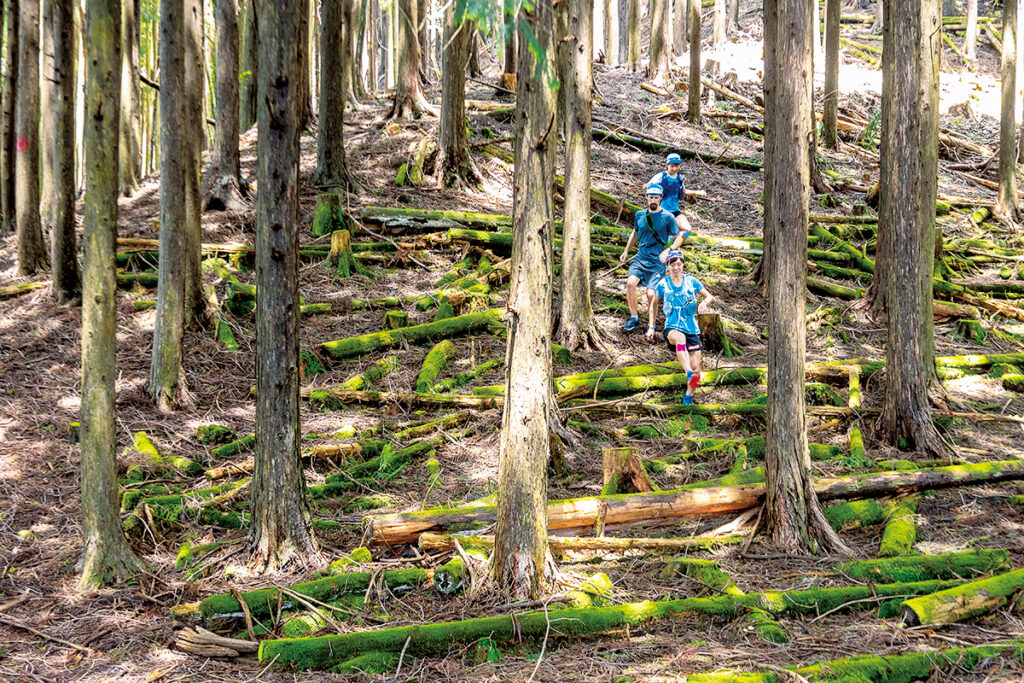
Once up to the ridge line, the trail is gentle in contrast to the vertiginous ascent so far. Walking through a bright broadleaf forest, we reach the summit of Chishayama. We take a lunch break at a spot with a view of Suruga Bay in the distance. Açai, which operates a vegan inn, also serves a lunch box made with healthy brown rice and local seasonal vegetables, perfect for a power recharge.
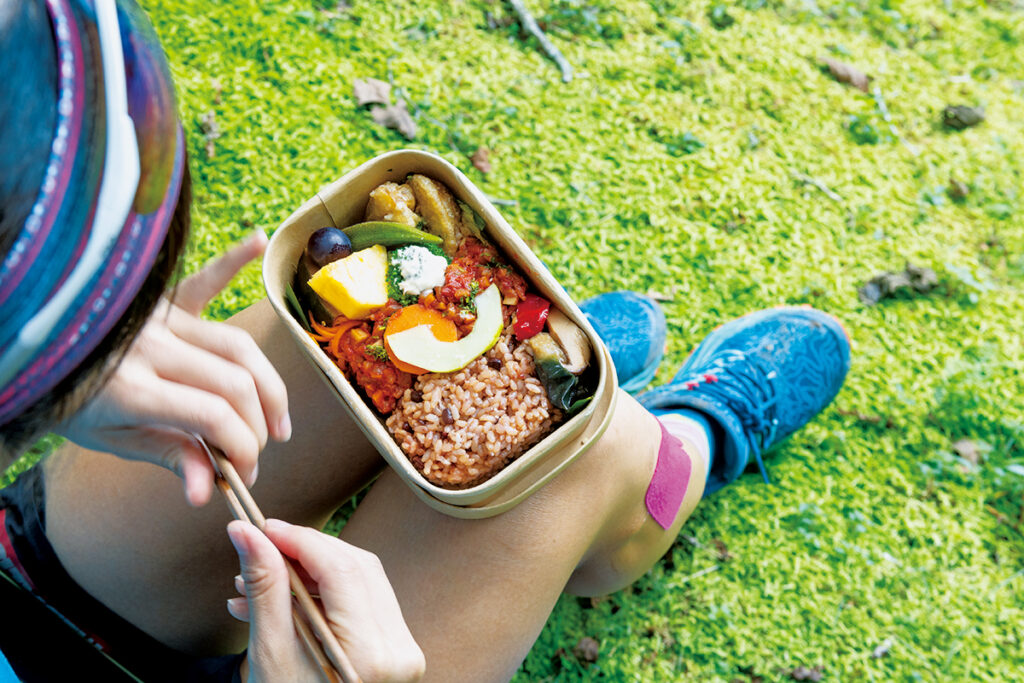
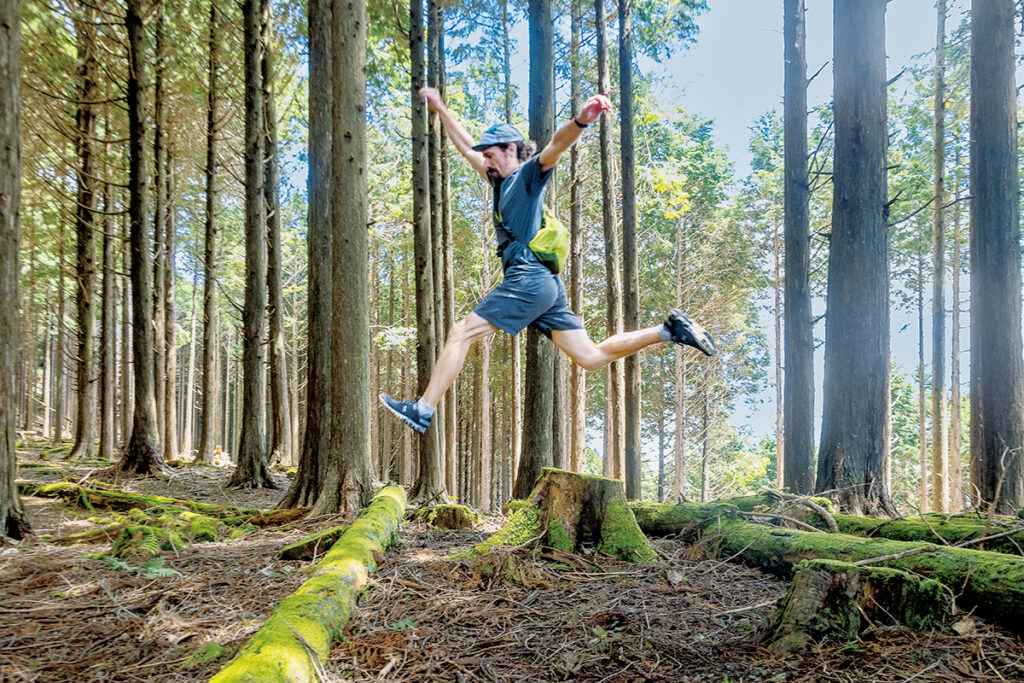
Walking along a mostly flat ridge line festooned with moss-covered rocks, we came to the summit of Tenguishi-yama. The viewpoint in the foreground affords a panoramic view of Mt. Asahi, Mt. Daimugen, and Mt.Tekari. After descending 900 or so meters from Mt. Tenguishi, a steel bridge floating on an emerald green lake, comes into view. It’s our goal, Okuōikojō Station.
Although the course can be traversed in about 7 hours, Kawane Honcho offers plenty of fun before and after the trail, so you may want to spend a night before or after. Once down the trail we hop onto the train and head straight for Sessokyo Onsen to take a relaxing soak in the warm thermal spring waters.
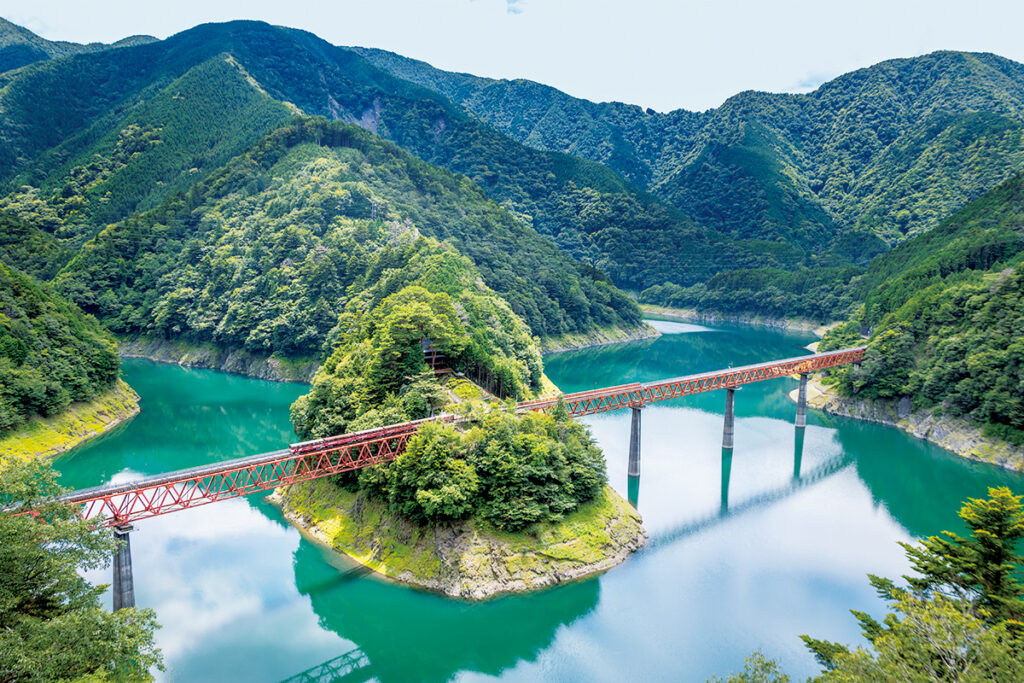
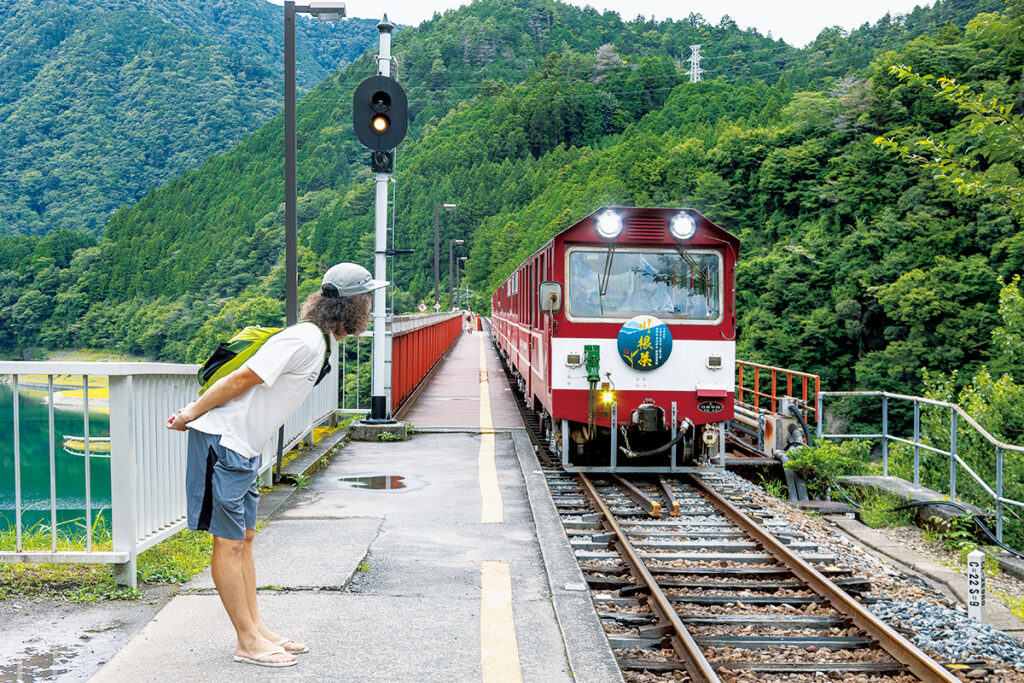
“Farm Cafe Kaze Koubou”, located near Senzu Station, is a cafe adjacent to a farm raising chickens and goats. This self-renovated old house offers dishes using seasonal vegetables and free-range eggs produced on the farm, as well as exquisite ice cream made with goat’s milk – Bleat!!
Lodging was at Açai, which provided us with lunch boxes. The inn is a cozy old house built in the Edo period, and prides itself on its relaxing ambience and vegan cuisine. On this particular occasion, we were treated to a colorful vegan sushi.
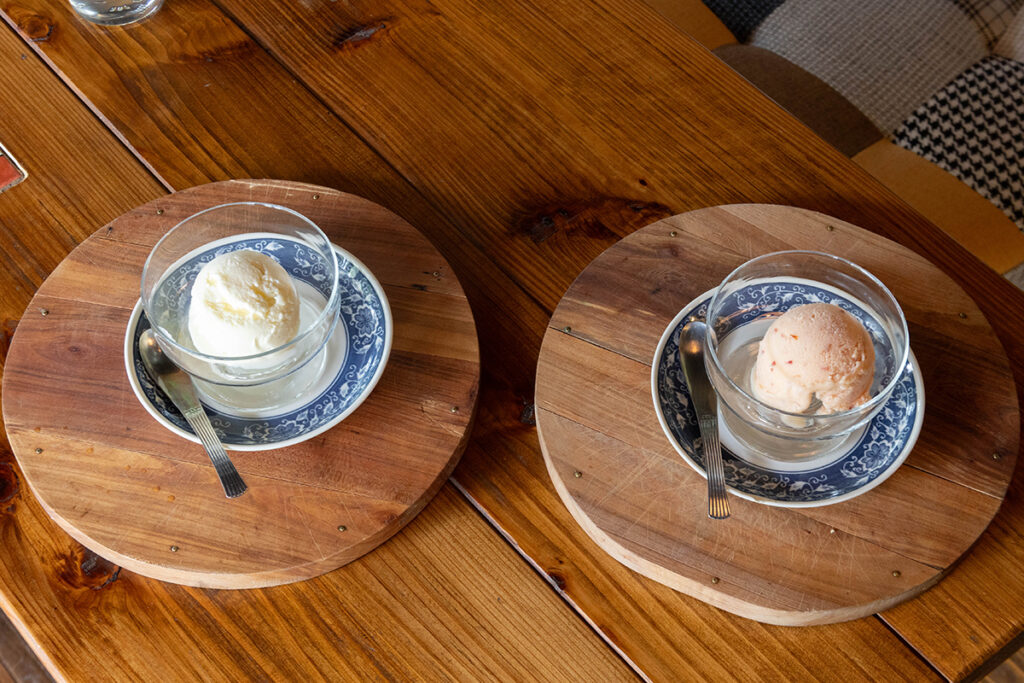
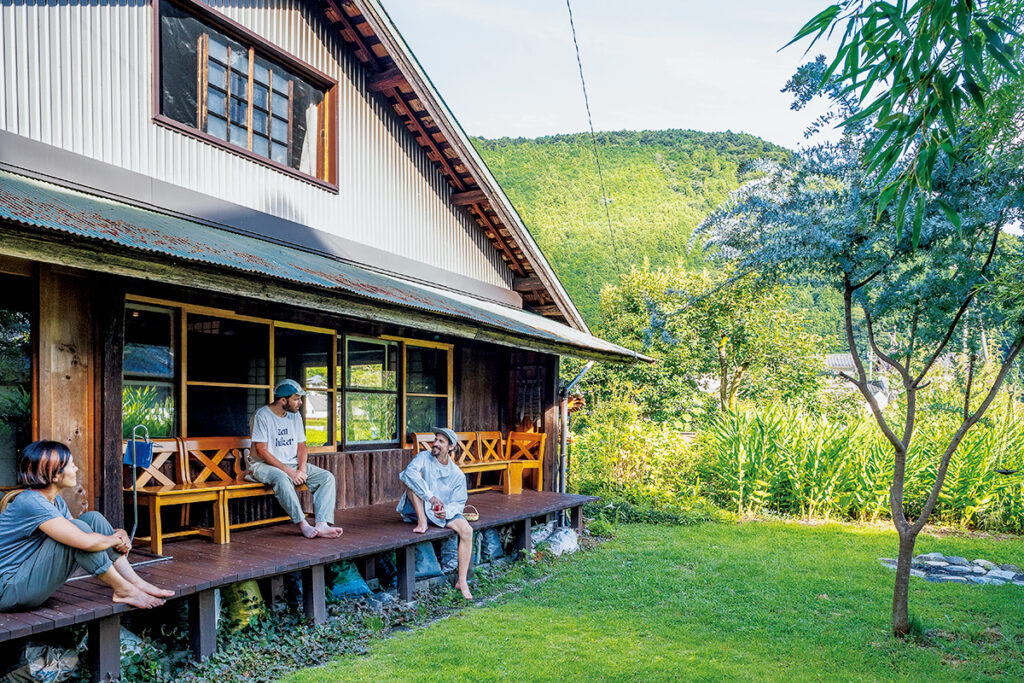
Unique “Bon Odori” in a satoyama plagued by deer damage
In the mostly mountainous area of Kawane Honcho, the deep mountains and rivers have preserved unique folk customs and cultures. One such example is the Bon Odori style of dance in the neighborhood of Tokuyama, which was recognized last year as a UNESCO Intangible Cultural Heritage. “Shikan-mai”, “Hiyai Odori”, and “Kyogen” performed on the night of August 15 every year are collectively referred to as “Tokuyama Bon Odori“. One of the most unique is the “Shikan-mai” (deer dance), which features stag and a doe dressed in white deer heads as well as Hyottoko (a comical Japanese character,) which has been passed down by junior high school students in recent years. “It apparently originated as a way to fend off deer that were destroying crops and to pray for a good harvest, but later changed to a way to guard the “Hiyai” dance performed on the shrine grounds,” explains Hitoshi Sawamoto, vice president of the Tokuyama Classical Performing Arts Preservation Society.
“There are various theories, but it is believed that the dance was orally conveyed during the Middle Ages and gradually adapted to suit the times. In this mountainous community, deer are worshiped as incarnations of mountain deities, and the idea of living in harmony with nature is embedded in this dance.”
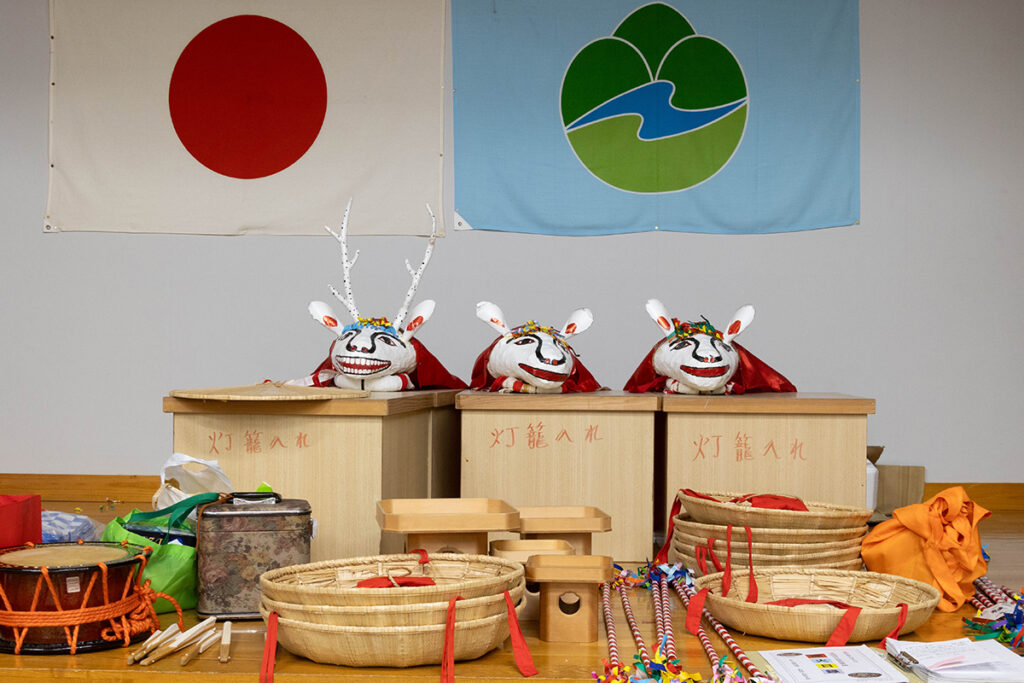
“Coexistence with nature” remains a pertinent theme in Kawane Honcho even in the modern age. TONONKA is a satoyama conservation group established by volunteers in their 20s, including Miyu Watanabe. Together, they are engaged in conservation activities and fostering hunters with the aim of coexisting with nature and living in satoyama, which is beset by damage from wild animals. Local businesses utilize the skins and antlers, which are a byproduct of hunting. For example, “reveroots,” which has an atelier in a neighboring town, sells fire starters and other products fashioned from discarded deer antlers, from the viewpoint of utilizing all the life we have been given.
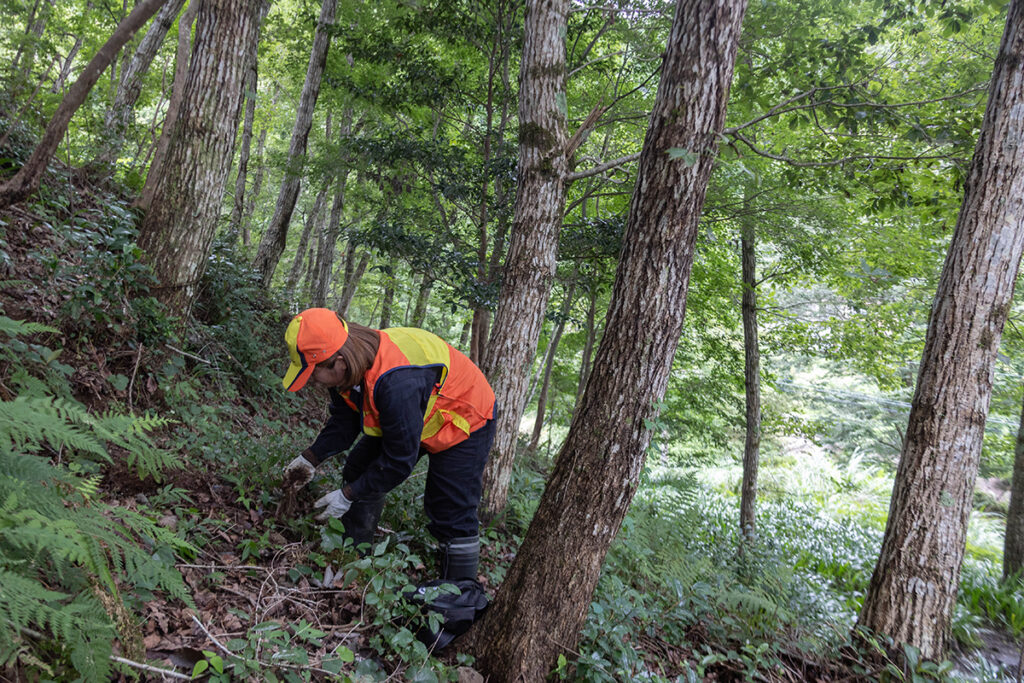
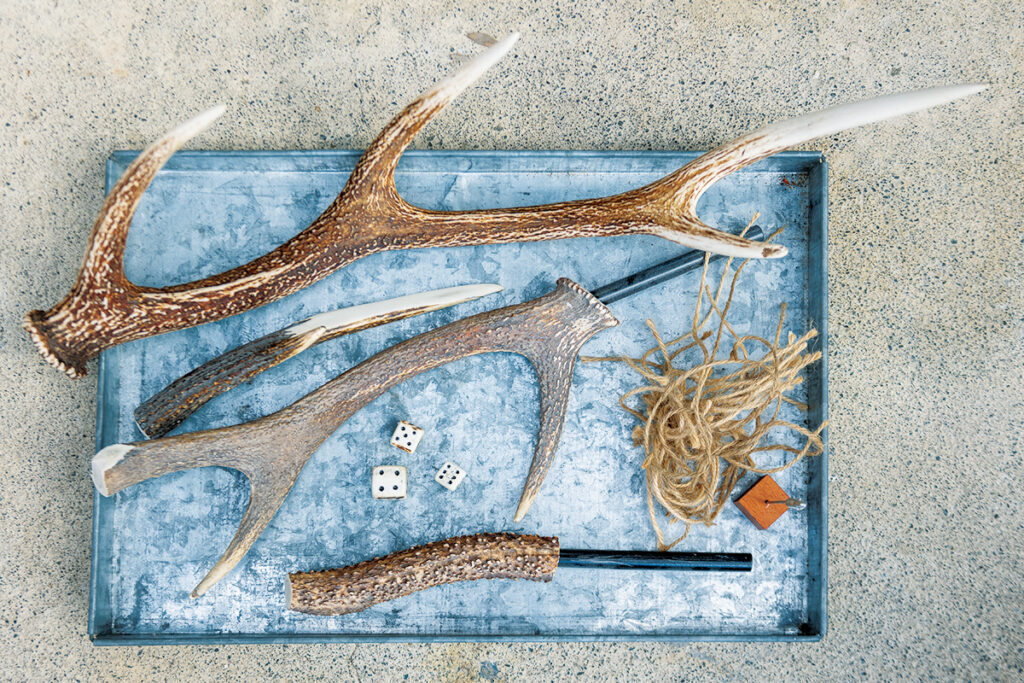
“Now, thanks to a group of willing producers, deer meat, antlers, and skins can be effectively utilized as a local resource. In the future, we would like to spur an influx of newcomers with activities that take advantage of hunting while addressing the issue of an aging population.” (Watanabe-san)
The rich nature, the folk customs cultivated in the area, and the local way of life that has preserved and passed them on. Kawane Honcho, with its abundant opportunities for trail treks and other fun activities, is sure to become a destination that draws in hordes of hikers.
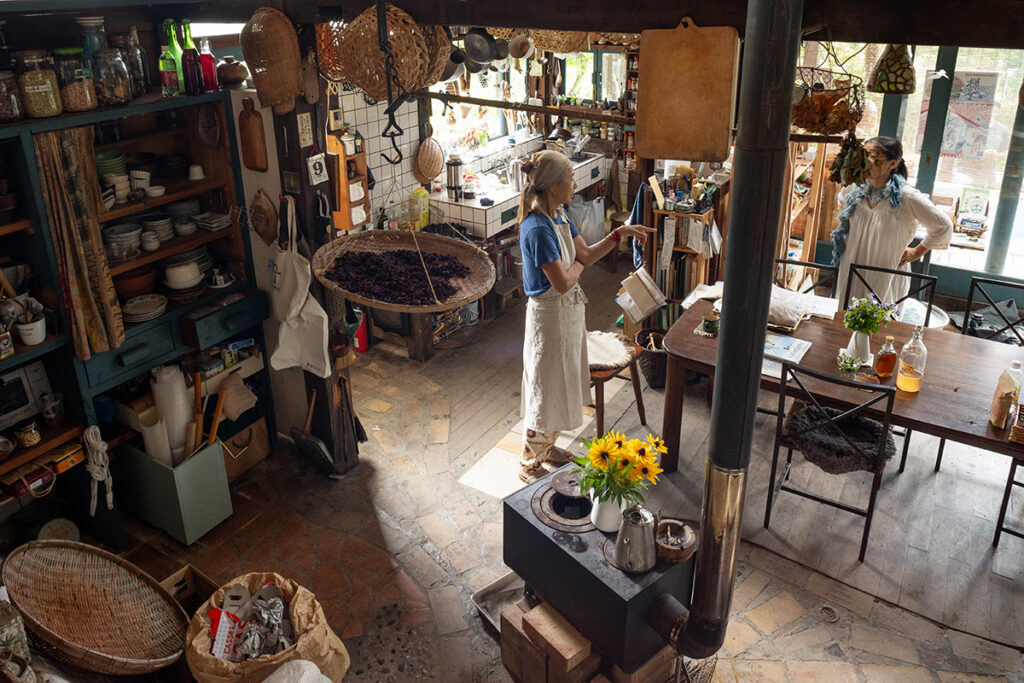
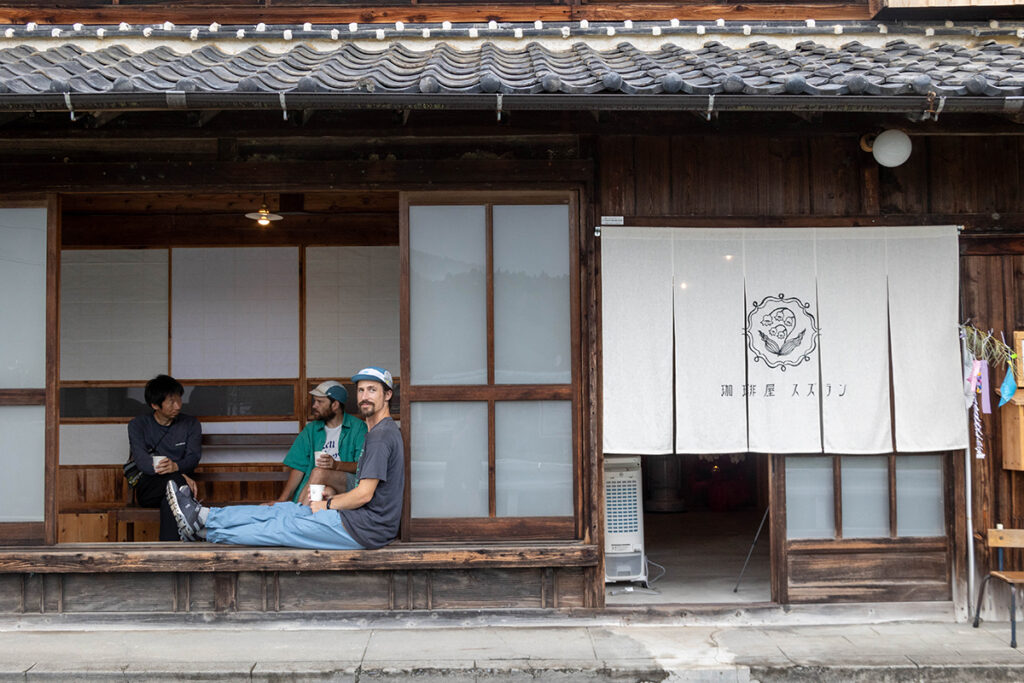
Trail Guide
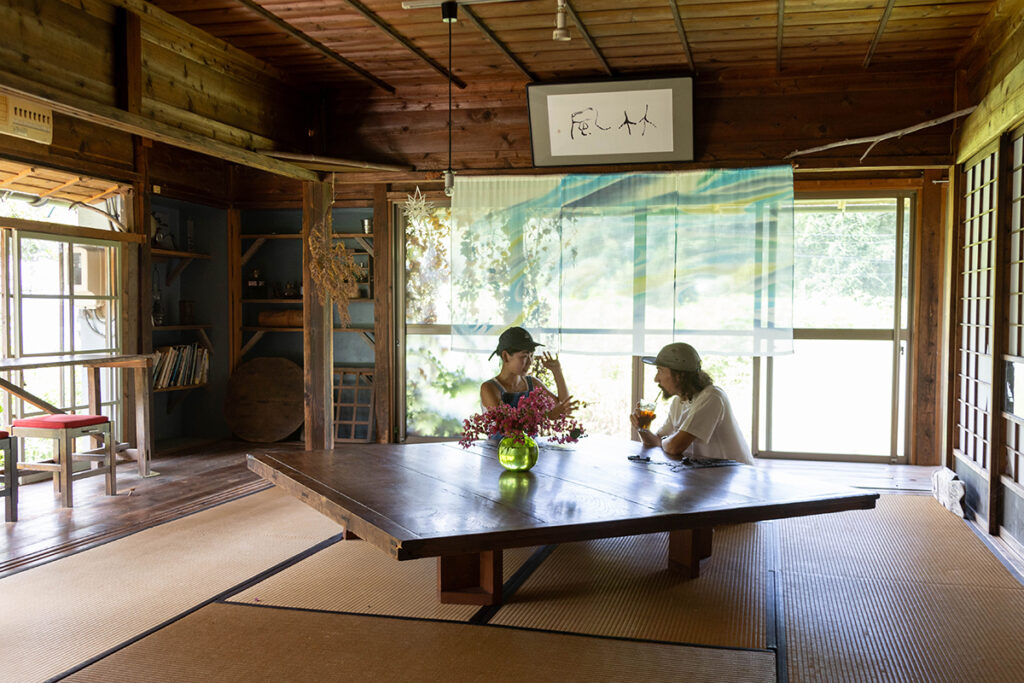
321 Kamigishi, Kawane Honcho, Haibara-gun, Shizuoka
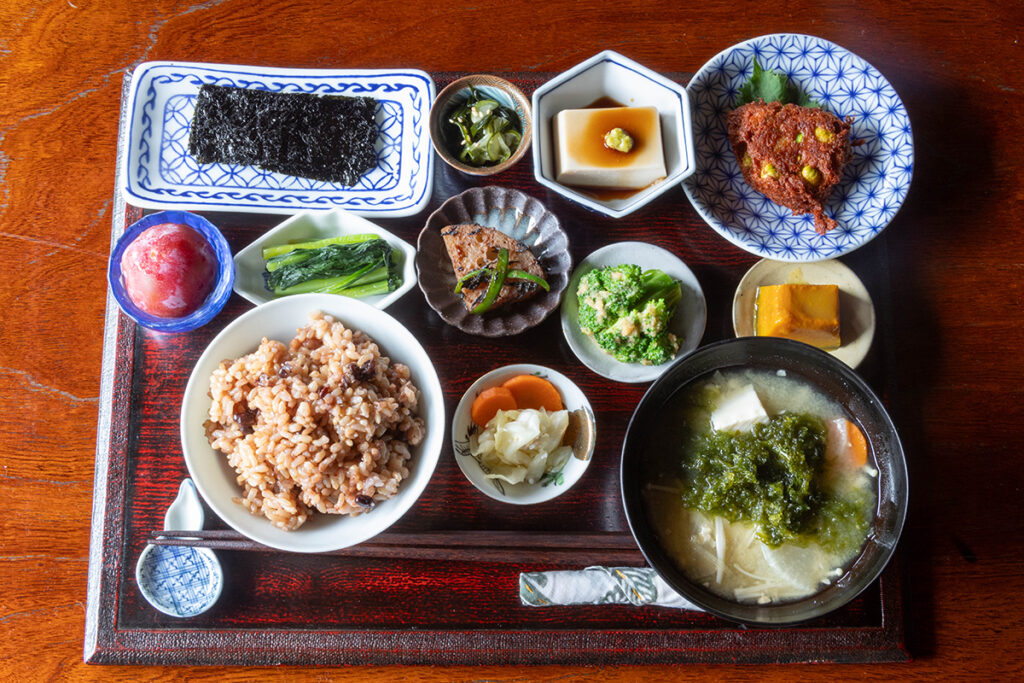
276-1 Kuwanoyama, Kawane Honcho, Haibara-gun, Shizuoka
TEL:0547-59-2308
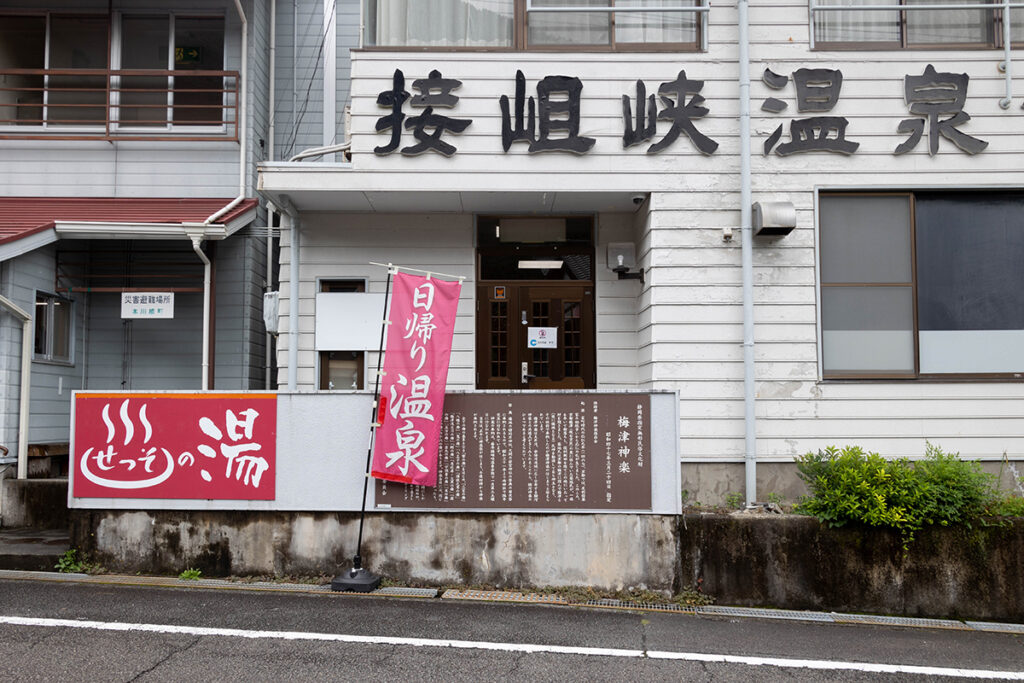
175-2 Umechi, Kawane Honcho, Haibara-gun, Shizuoka
TEL:0547-59-3764
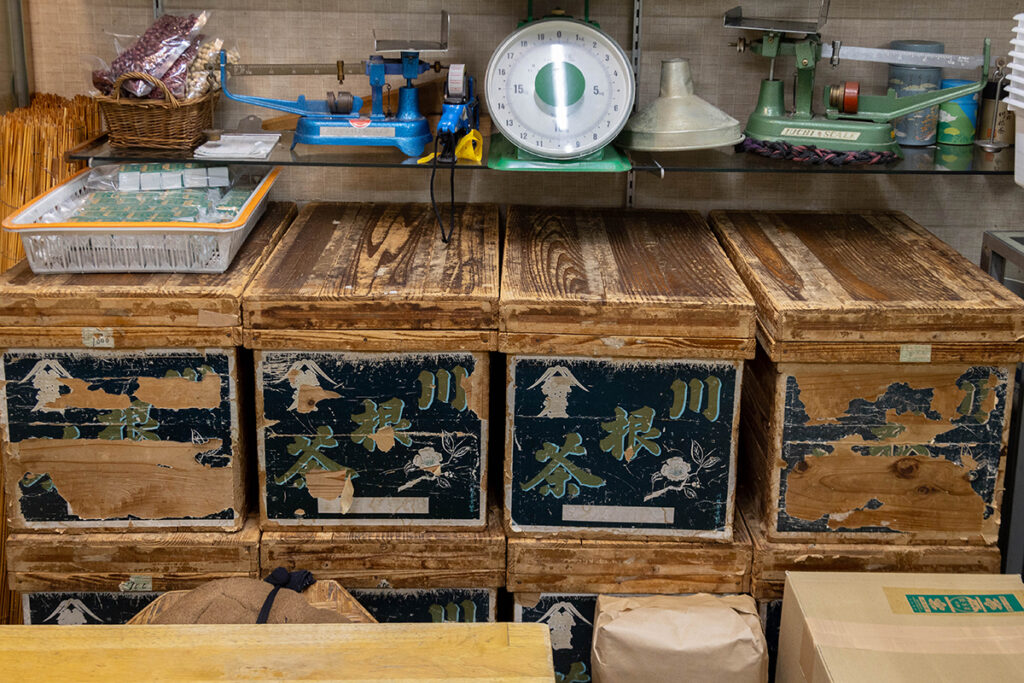
1216-13 Senzu, Kawane Honcho, Haibara-gun, Shizuoka
TEL:0547-59-2222
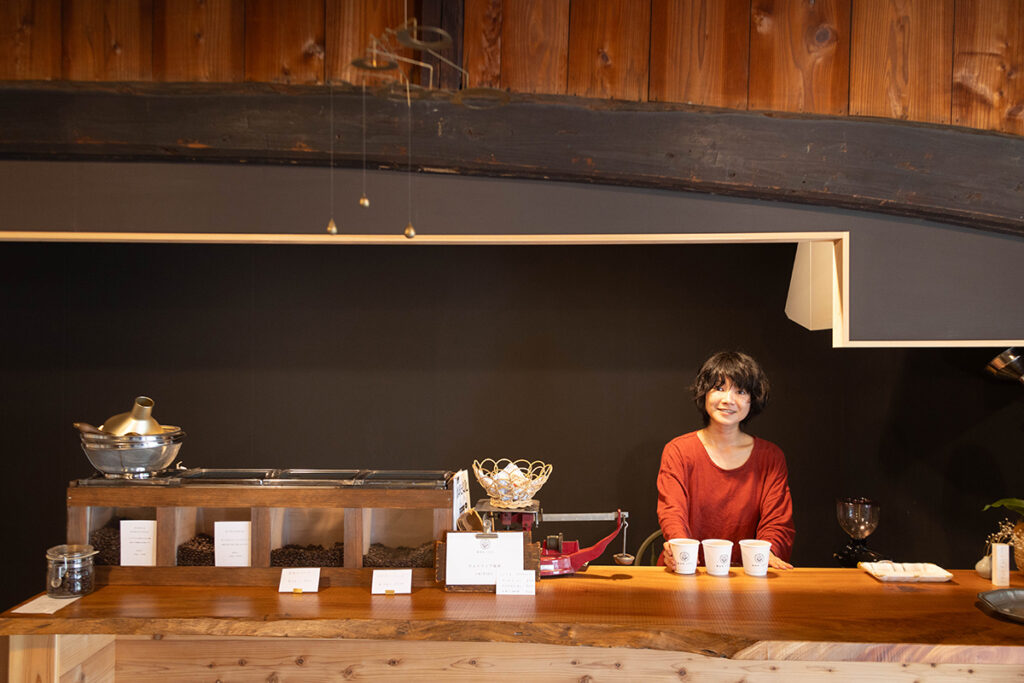
218-1 Shimonagao, Kawane Honcho, Haibara-gun, Shizuoka
Kawane Honmachi Machizukuri Tourist Association
1216-21 Senzu, Kawane Honcho, Haibara-gun, Shizuoka
TEL:0547-59-2746

